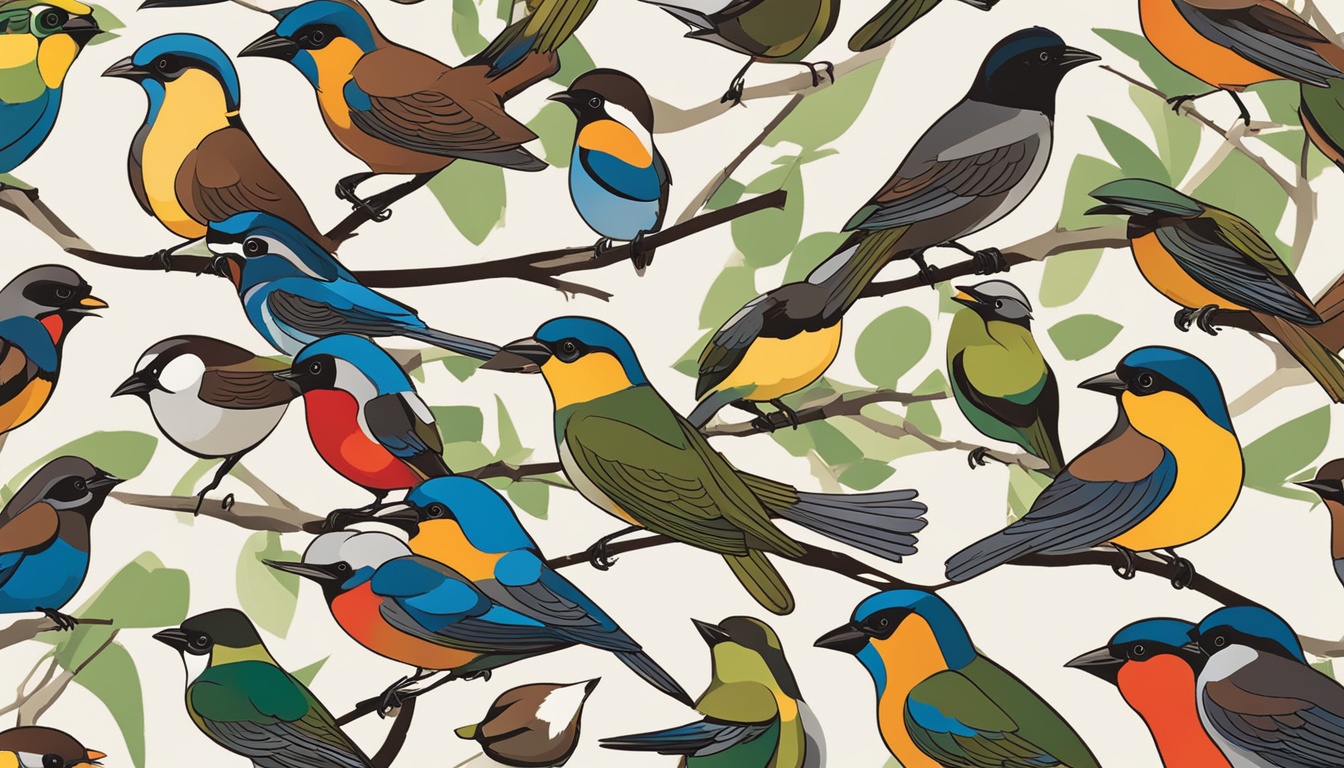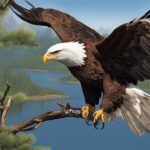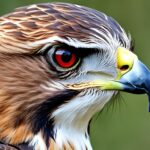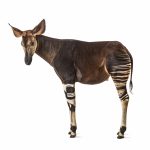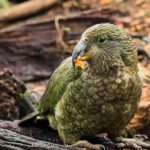Identifying songbirds in the USA can be rewarding for bird lovers. There are more than 800 bird species you might spot. To know them better, use bird guides like those from Audubon. They offer tips on recognizing these birds, and how climate change affects them. This guide aims to enhance your birdwatching by teaching practical identification skills.
Understanding Songbird Characteristics
Identifying songbirds in the USA involves looking at their physical traits, color patterns, and behaviors in their homes. These parts help us tell the different kinds of songbirds apart.
Physical Features
Looking at a bird’s shape, size, and special body parts like its beak, wings, and tail is key. By doing this, you can see what makes them different from others.
Color Patterns
Color patterns are important too. Songbirds have beautiful, colorful feathers in unique layouts. Recognizing these colors and patterns can help you know which bird is which by both sight and sound.
Behaviors and Habitats
How a bird acts and where it lives also helps with identification. Some songbirds have special ways they eat, find mates, or fly. Knowing their favorite living places helps match them to the right bird species.
Using all these clues together—what a bird looks like, its colors, how it acts, and where it lives—gives us a full picture. This helps us identify songbirds all over the USA correctly. With this knowledge, birdwatching becomes more fun and rewarding.
Identifying Songbirds by Song
Recognizing songbirds by their tunes is like discovering hidden beauty. Each bird species has a unique song. This makes it possible to know who’s singing, even if you can’t see them. Birds like the Northern Cardinal and American Robin are easily known by their songs.
Common Vocalizations
Songbirds use different tunes for mating, alarms, and marking their territory. The Black-capped Chickadee has a happy whistle. The Wood Thrush sings a beautiful, flute-like song. Knowing these sounds well helps in identifying bird species.
Using the Merlin Bird ID App
The Merlin Bird ID app from the Cornell Lab of Ornithology is great for identifying birds by their songs. It can recognize over 1,300 bird songs using smart sound tech. The app changes bird sounds into helpful visual displays. This makes it easier for people to match songs to bird species. It’s a new and exciting tool for keen birdwatchers.
Common Backyard Songbirds in the USA
Many backyards in the USA feature charming songbirds that everyone enjoys watching. This includes the American Robin, Mourning Dove, and Northern Mockingbird. Each bird has unique calls and looks, and they live in different parts of the country during the year.
American Robin
The American Robin stands out with its orange breast and sweet song. It can be seen all over North America, often in lawns looking for food. It’s a sign of spring and a common face in any bird guide.
Mourning Dove
The Mourning Dove sings softly, adding a peaceful atmosphere to backyards. These birds are known for their slender shape and soft color. They do well in diverse places, making them a backyard favorite all year, especially in summer.
Northern Mockingbird
The Northern Mockingbird is unique because it copies other birds’ songs. It’s gray with white on its wings and is famous in bird guides. This bird is interesting to birdwatchers everywhere because of its many sounds and behaviors.
| Songbird | Distinctive Traits | Geographical Range | Common Seasons |
|---|---|---|---|
| American Robin | Orange breast, melodic song | Throughout North America | Spring and Summer |
| Mourning Dove | Mournful cooing, slender body | Various environments | Year-round, especially warm months |
| Northern Mockingbird | Mimicry of other birds, gray feathers | Across the United States | All seasons |
Watching for these birds can make birdwatching fun for anyone. Use field guides and birdwatching books to learn more about them. It will help you appreciate and know these American songbirds better.
How to Use Field Guides for Songbird Identification
Field guides are super important for anyone who loves watching birds, especially in the USA. They show detailed profiles and have pictures to make recognizing songbirds easier. These guides include everything to help you know what you’re seeing.
Popular Field Guides
The “Sibley Guide to Birds” by David Allen Sibley is a top pick, thanks to its detailed drawings and information. The “National Geographic Field Guide to the Birds of North America” is also a big hit, showing clear images and expert advice. These guides are great for new birdwatchers and those with more experience.

How to Use Range Maps
Range maps are really helpful in a field guide. They show where different birds live and move at different times of the year. By looking at these maps, you can figure out the best spots to see certain birds.
| Feature | Benefits |
|---|---|
| Detailed Illustrations | Helps with accurate visual identification of birds |
| Comprehensive Descriptions | Provides information on bird behaviors and habitats |
| Range Maps | Aids in locating birds based on seasonal movements |
Seasonal Changes and Migration Patterns in Songbirds
Seasonal changes greatly affect songbirds. These changes impact their migration paths and where they spend winter or summer. Knowing this helps birdwatchers and those working to protect them.
Understanding Migration
Songbird migration is quite interesting. It’s influenced by the weather, food, and their need to breed. This means that they travel long distances to find the best places to live throughout the year. You’ll see different local birds as some leave for winter, and others come from the north.
Winter and Summer Ranges
Finding out where songbirds go in winter and summer is important. It helps fans know where to see specific birds during the year. For instance, some birds go from Canada’s forests to Central America’s tropics.
Knowing about their movements helps plan birdwatching trips. It also adds to our understanding of their habits.
| Season | Region | Common Songbird Species |
|---|---|---|
| Winter | Southern United States | Yellow-rumped Warbler, Hermit Thrush |
| Summer | Northern United States | Red-eyed Vireo, Rose-breasted Grosbeak |
Using bird guides and apps can help you learn more about songbirds. These tools show you where birds are likely to be all year. They make understanding bird movements and behaviors easier.
How do you identify different types of songbirds in the USA?
To identify songbirds in the USA, you need sharp observation skills and a detailed journal. These help your birdwatching improve and make you really know these birds.
Observation Techniques
Observing birds well is crucial. First, find a spot where you can see them but not disturb. It’s important to be patient as you watch. Birds show small signs that can help you know what they are.
Knowing these small details is key. It helps in spotting birds by how they look and sound.
Keeping a Birdwatching Journal
A journal is great for bird lovers. Write down what you see and hear about each bird. This makes you understand them better.
Use the journal to write about when and where you see these birds. This helps track their movements. It’s a big part of learning about different songbirds in the USA.
Photographing and Recording Songbirds for Identification
Taking photos and recordings can really help you identify birds. It’s important to respect the birds’ habits and use ethical methods. This way, you get a detailed view of these beautiful creatures.
Best Practices for Bird Photography
If you want to be great at bird photography, follow these tips:
- Understand Bird Behavior: Watch them to know where they’ll move.
- Use Appropriate Equipment: Get high-quality cameras and lenses for the best photos.
- Maintain Ethics: Be sure not to bother them in their homes.
Using Audio Recorders
Recording birdsongs is a powerful tool for birders. It lets you store their unique calls for later identification. Plus, combining these sounds with apps like Merlin Bird ID makes identifying birds easier. The app helps match sounds to the right bird species.
The Role of Citizen Science in Songbird Identification
Citizen science is changing how we identify and save songbirds. It brings amateur birdwatchers together with scientists on platforms like eBird and the Macaulay Library. These platforms help gather big amounts of data. This data is key for the scientific world, making tools like the Merlin Bird ID app more accurate.
Contributions from citizen science go beyond just figuring out bird types. They also help us see where different birds live. This info is crucial for protecting songbirds. Your help means researchers can follow bird health, where they travel, and how they deal with the changing world.
Joining citizen science projects helps you spot and name songbirds better. It also supports an important cause. Every bird you note, whether common or rare, helps us all. This work is part of a bigger movement. It helps us enjoy and protect the wide variety of songbirds in the U.S.

